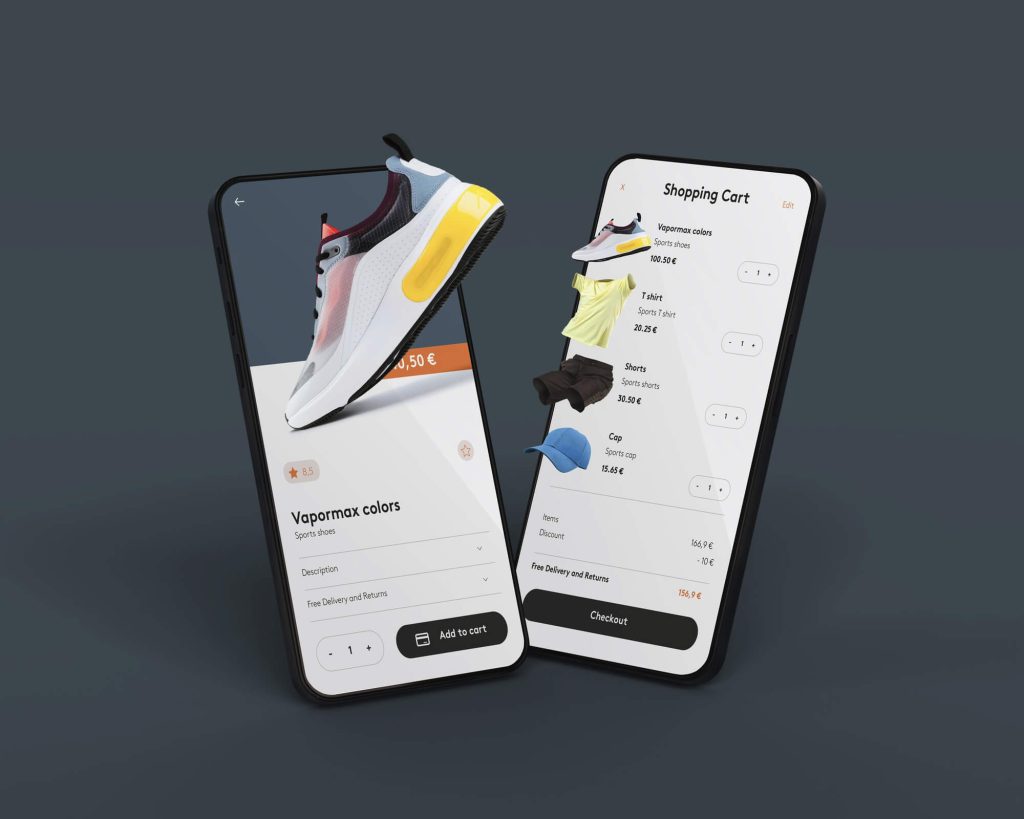
Introduction to Responsive Web Design
In today’s digital age, having a website that is not only visually appealing but also accessible across various devices has become imperative. With the increasing use of smartphones, tablets, and other mobile devices, users now expect websites to adapt seamlessly to their screens. This is where responsive web design comes into play.
Responsive web design refers to the practice of creating websites that automatically adjust their layout and appearance based on the screen size and orientation of the device being used. By employing this approach, businesses can ensure that their online presence remains consistent and user-friendly regardless of whether visitors are accessing it from a desktop computer or a smartphone.
While responsive web design may seem like an overwhelming concept at first, incorporating best practices can make the process much more manageable. In this blog post, we will explore these best practices step by step so you can create engaging and effective responsive designs for your website. So let’s dive in!
Setting the Viewport
Setting the viewport is a crucial step in responsive web design. The viewport determines how content will be displayed on different devices, such as smartphones, tablets, and desktop computers. By setting the viewport correctly, you ensure that your website looks good and functions properly across all screen sizes.
To set the viewport, you need to add a meta tag to the head section of your HTML document. This meta tag tells the browser how to scale and size the page for optimal viewing. The most common method is using “viewport” with “width=device-width” which sets the width of the page to follow the screen’s width.
It’s important to note that if you don’t set the viewport correctly, mobile devices may default to displaying websites at their full width, resulting in tiny text and images that are difficult to read or navigate.
By setting an appropriate initial-scale value in CSS media queries for different devices’ widths, you can control how much zooming should occur when users first visit your website on their device.
Setting the viewport is an essential practice in responsive web design as it ensures that your website adapts well to various screen sizes and provides a positive user experience across all devices.
Size Content to the Viewport
One essential aspect of responsive web design is ensuring that the content on your website adjusts accordingly based on the size of the viewport. By sizing content to fit different screen sizes, you can provide an optimal user experience across various devices.
To achieve this, it is crucial to use relative units like percentages and ems instead of fixed units such as pixels. This allows elements to scale proportionally and adapt to different screen sizes seamlessly.
Another technique for sizing content is using CSS frameworks like Bootstrap or Foundation. These frameworks offer predefined grids that automatically adjust based on the viewport size, making it easier to create responsive layouts.
In addition to scaling content, it’s important to consider typography when designing for responsiveness. Use fluid typography techniques such as vw (viewport width) units or responsive font-size declarations with media queries. This ensures that text remains legible and easily readable regardless of the device used by visitors.
Remember that optimizing images is also crucial in responsive design. Use appropriate image formats and compress them without compromising quality so they load quickly on all devices while maintaining visual appeal.
By incorporating these best practices in your responsive web design approach, you can ensure a seamless user experience across various devices and screen sizes.
Utilizing CSS Media Queries for Responsiveness
CSS media queries play a crucial role in creating responsive web designs. They allow us to adapt the layout and styles of our website based on different screen sizes and devices. By using media queries, we can ensure that our content is displayed optimally across various platforms.
To begin utilizing CSS media queries, it’s important to set up breakpoints. Breakpoints are specific screen widths where the layout of your website will change. These breakpoints define how your content will be rearranged or resized as the viewport size changes.
Once you have defined your breakpoints, you can apply specific styles to each one using media query syntax in your CSS file. This allows you to target certain screen sizes and apply custom rules accordingly.
In addition to adjusting layout, media queries also enable us to modify other design elements such as font sizes, image dimensions, and padding for better readability on different devices. For example, you might increase the font size for smaller screens or reduce the amount of padding around images on mobile devices.
By utilizing CSS media queries effectively, we can create a seamless user experience across all devices. It ensures that our websites not only look visually appealing but also provide optimal functionality regardless of whether users are accessing them from desktops, tablets, or smartphones.
Remember that testing is essential when working with CSS media queries. Make sure to test your website on various devices and screen sizes to ensure responsiveness before deployment.
Leveraging CSS media queries empowers web designers and developers to build adaptive websites that offer an excellent user experience across multiple platforms while maintaining consistency in branding and design aesthetics
Choosing Breakpoints in Responsive Design
Choosing Breakpoints in Responsive Design is a crucial aspect of creating a visually appealing and user-friendly website across different devices. A breakpoint is the point at which the design layout changes to accommodate various screen sizes.
When it comes to selecting breakpoints, it’s important to consider the specific needs and characteristics of your target audience. Start by analyzing data on device usage and screen resolutions to determine common breakpoints that align with your users’ preferences.
Another factor to consider is the content hierarchy. Identify key elements that need emphasis or repositioning at different screen sizes. For example, larger screens may allow for more expansive navigation menus or multiple columns, while smaller screens require simplified layouts with stacked elements.
It’s also essential to test your chosen breakpoints across multiple devices and browsers to ensure consistency and functionality. Make adjustments as needed based on usability testing feedback and performance metrics.
Remember that choosing breakpoints isn’t a one-time task; it requires ongoing monitoring and adjustment as new devices are released or user behaviors change over time.
Thoughtful selection of breakpoints plays a significant role in delivering an optimal responsive experience for users, enhancing engagement, and driving conversions on your website.
Handling Images in Responsive Design
Images play a crucial role in web design, and it is important to ensure that they are optimized for different devices and screen sizes. When it comes to responsive design, there are several best practices for handling images.
One of the key considerations is using appropriate image formats. JPEG is ideal for photographs, while PNG works well for graphics with transparent backgrounds. SVG (Scalable Vector Graphics) is recommended for logos and icons as it can scale without loss of quality.
Another aspect to consider is the size of the images. Large file sizes can significantly impact page load times, especially on mobile devices with slower internet connections. It’s essential to compress images without compromising their quality using tools like ImageOptim or TinyPNG.
In addition to optimization, utilizing CSS media queries allows designers to define specific rules for displaying images based on screen size breakpoints. This ensures that images adjust accordingly, enhancing user experience across different devices.
Furthermore, implementing responsive image techniques such as “srcset” and “sizes” attributes enables browsers to choose the most appropriate image version based on viewport size and device capabilities.
By following these best practices for handling images in responsive design, you can ensure that your website delivers visually appealing content while maintaining optimal performance across various devices and screen resolutions
Responsive Typography Techniques
Typography plays a crucial role in the overall design and user experience of a website. With the rise of mobile devices, it has become essential to implement responsive typography techniques to ensure optimal legibility and readability across different screen sizes.
One effective technique is using viewport units for font sizing. Instead of relying on fixed pixel values, viewport units allow you to set font sizes based on the size of the browser window. This ensures that text scales proportionally as the screen size changes.
Another important consideration is line length. On smaller screens, long lines of text can be difficult to read. By setting a maximum width or using CSS media queries, you can control how many characters appear per line, ensuring an optimal reading experience.
Additionally, adjusting letter spacing and line height can greatly enhance readability on different devices. Increasing letter spacing slightly can help prevent characters from appearing cramped on smaller screens, while adjusting line height provides adequate spacing between lines for improved legibility.
Furthermore, choosing appropriate fonts that are readable at various sizes and weights is vital in responsive typography. It’s important to select typefaces with good legibility even at smaller sizes, avoiding overly intricate or thin fonts that may become illegible when scaled down.
Implementing these responsive typography techniques will ensure that your website’s content remains easily readable across all screen sizes and devices
Best Practices for Layout in Responsive Web Design
When it comes to creating a responsive web design, the layout plays a crucial role in ensuring that your website looks great and functions properly across various devices. Here are some best practices to consider when designing the layout for your responsive website.
Prioritize content hierarchy by organizing elements based on their importance. This ensures that users can easily find what they’re looking for regardless of the screen size. Start with essential information at the top and progressively reveal less important details as users scroll down.
Use a grid system to create a consistent and balanced layout. Grids help maintain alignment and spacing between elements, providing structure and improving readability on different devices.
Utilize white space effectively to enhance visual appeal and prevent clutter. Give your content room to breathe so it’s easier for users to digest information without feeling overwhelmed.
Fourthly, consider using modular design techniques such as card-based layouts or collapsible menus. These approaches allow you to present content in bite-sized chunks while maintaining flexibility across different screen sizes.
Fifthly, implement flexible images that adapt seamlessly to various device resolutions. Use CSS techniques like `max-width: 100%` or `object-fit: cover`to ensure images resize proportionally without losing quality or impacting page load times.
Always test your website across multiple devices and browsers before launch. This helps identify any issues with responsiveness or functionality early on so they can be addressed promptly.
By following these best practices for layout in responsive web design, you can create an engaging and user-friendly experience that adapts effortlessly to different screen sizes without sacrificing aesthetics or usability.
Optimizing Text for Reading on Different Devices
In the era of responsive web design, it is crucial to ensure that text is optimized for reading on various devices. With users accessing websites from smartphones, tablets, and desktops, it is essential to consider readability across different screen sizes.
One key aspect of optimizing text for different devices is choosing an appropriate font size. While larger fonts may be more readable on smaller screens, they can appear overwhelming on larger displays. Conversely, smaller fonts may strain the eyes of users with poor vision or when viewed on mobile devices. Striking a balance between legibility and aesthetics is paramount.
Another consideration in optimizing text for different devices involves line length. Long lines of text can be difficult to read on narrow screens while short lines may result in excessive scrolling. Setting an optimal line length ensures that readers can comfortably follow along without feeling overwhelmed by cramped or stretched-out paragraphs.
Additionally, selecting suitable font styles plays a pivotal role in enhancing readability across diverse devices. Some typefaces are better suited for print media and may not translate well to digital platforms due to their intricate details or thin strokes that might become blurred at lower resolutions. Instead, opting for web-safe fonts or those specifically designed for screen use helps maintain clarity and legibility regardless of device.
Moreover, considering contrast when optimizing text is vital as it determines how easily content can be read against its background color or image. High contrast between the text and background enhances readability by reducing eye strain and ensuring clear visibility even under varying lighting conditions.
Utilizing white space effectively aids in improving the overall reading experience across multiple devices. Proper spacing between paragraphs and sections allows readers to focus on content without feeling overwhelmed by cluttered layouts.
By implementing these optimization techniques when designing responsive websites, developers can ensure that their textual content remains accessible and user-friendly regardless of the device being used – giving all visitors an enjoyable reading experience tailored specifically to their needs.
Avoiding Content Hiding and Enhancing Accessibility
When it comes to responsive web design, it is crucial to ensure that your content is accessible and not hidden on different devices. One way to achieve this is by avoiding the use of fixed widths for elements on your website. Instead, utilize flexible units such as percentages or relative units like ems or rems.
Another important aspect of accessibility in responsive design is making sure that text and images are appropriately sized for different screen sizes. This can be done through CSS media queries, where you define specific styles based on the viewport width. By adjusting font sizes and image dimensions accordingly, you can enhance readability and usability across devices.
In addition to sizing content correctly, it’s essential to consider accessibility features for users with disabilities. This includes providing alternative text descriptions for images (using the alt attribute) and ensuring that interactive elements can be easily accessed using a keyboard or touch input.
To further improve accessibility, pay attention to color contrast ratios between foreground and background elements. Low contrast can make it difficult for individuals with visual impairments to read content effectively.
Test your website on various devices and assistive technologies to identify any potential issues with content hiding or access barriers. Regular testing allows you to make necessary adjustments and provide an inclusive user experience for all visitors.
Remember, ensuring accessibility in responsive web design goes beyond aesthetics – it promotes inclusivity while improving usability across different platforms!
Testing and Debugging Responsive Websites
Testing and debugging are crucial steps in ensuring the effectiveness of responsive web design. With so many different devices and screen sizes available, it is important to thoroughly test how your website responds across various platforms. This will help identify any issues or inconsistencies that may arise.
One effective way to test responsiveness is by using emulators or simulators. These tools allow you to view your website on different virtual devices, providing a close approximation of how it will appear on actual devices. By testing on a wide range of emulated devices, you can ensure that your website looks and functions properly across multiple screen resolutions.
Another important aspect of testing is conducting real-world device testing. This involves physically testing your website on actual smartphones, tablets, and other devices to see how it performs in real-time. This step is essential as it allows you to identify any usability or functionality issues that may not be apparent during emulator testing.
In addition to visual appearance and functionality, it’s also crucial to test the loading speed of your responsive website. Slow loading times can have a negative impact on user experience and search engine rankings. Use tools like Google PageSpeed Insights or GTmetrix to analyze the performance of your site and make necessary optimizations for faster load times.
When debugging responsive websites, pay attention to CSS breakpoints and media queries used in the design. Make sure they are implemented correctly throughout the layout so that content displays appropriately at each breakpoint. Inspecting elements with browser developer tools can help identify any misalignment or overlapping issues that need fixing.
Regularly monitor analytics data such as bounce rates, time spent on page, and conversion rates for both desktop and mobile users.
This data will provide valuable insights into user behavior patterns which can guide further improvements in responsiveness for better engagement.
Overall, testing and debugging are integral parts of creating a successful responsive web design.
By thoroughly testing across various platforms, using emulators, conducting real-world device testing, evaluating loading speed,
debugging breakpoints and media queries, and analyzing. Latest Trends and Technologies in Responsive Web Design
The field of responsive web design is continually evolving, with new trends and technologies emerging to enhance user experiences across devices. One such trend is the use of microinteractions, which are subtle animations or effects that provide feedback to users when they interact with a website. These interactions can make browsing more intuitive and engaging.
Another trend in responsive web design is the adoption of voice user interfaces (VUI). With the rise of smart speakers and virtual assistants like Siri and Alexa, websites need to be optimized for voice searches. This includes incorporating conversational language into content and ensuring that navigation menus are accessible through voice commands.
Progressive Web Apps (PWAs) have also gained traction in recent years. PWAs combine the best features of native mobile apps with the accessibility of websites. They offer offline functionality, push notifications, and can be installed on a user’s home screen without requiring an app store download.
In terms of technology, one notable advancement is the use of CSS Grid Layouts. This allows designers to create complex grid-based layouts more efficiently than ever before. It offers precise control over positioning elements on a webpage while maintaining responsiveness across different screen sizes.
There has been an increased focus on performance optimization in responsive web design. Techniques such as lazy loading images and minifying code help minimize load times for better user experiences.
Staying up-to-date with these latest trends and technologies ensures that your responsive web designs remain innovative and future-proofed against changing technological landscapes.
Conclusion and Next Steps
H2: Responsive web design has become an essential practice in today’s digital landscape. With the increasing use of mobile devices and varying screen sizes, it is crucial for websites to adapt and provide a seamless user experience across different platforms.
By following the best practices outlined in this article, such as setting the viewport correctly, utilizing CSS media queries, choosing appropriate breakpoints, and optimizing content for different devices, you can ensure that your website looks great on any screen size.
Additionally, by implementing responsive typography techniques, optimizing text for readability on various devices, avoiding content hiding issues, enhancing accessibility standards, and thoroughly testing and debugging your responsive website before launch; you can provide users with an exceptional browsing experience regardless of their device.
As technology continues to evolve rapidly, it is important to stay updated with the latest trends and technologies in responsive web design. Keeping an eye on emerging frameworks or tools can help streamline your development process further.
To take your skills in responsive web design to the next level:
1. Stay informed about new developments by reading industry blogs and attending relevant conferences.
2. Experiment with new techniques and tools to enhance responsiveness.
3. Continuously test your designs on different devices to identify potential issues.
4. Seek feedback from users to improve usability.
5. Collaborate with other professionals in the field through forums or online communities.
Remember that creating a successful responsive website requires ongoing effort and adaptation based on user feedback and technological advancements.
So go out there – create stunningly beautiful websites that seamlessly respond to every user’s needs!


